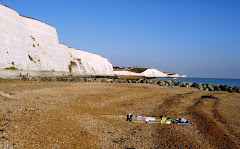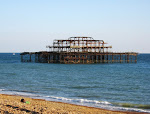+004.JPG) One of the best known features of Spain is its passion for the fiesta, a tradition kept alive and well even in the face of modern communications and globalisation. Every town has its annual highlight – celebrating a saint’s day, or a political or historic event.
One of the best known features of Spain is its passion for the fiesta, a tradition kept alive and well even in the face of modern communications and globalisation. Every town has its annual highlight – celebrating a saint’s day, or a political or historic event.The highlight of Vilanova’s fiesta calendar is the Carnaval, held over a week in the run up to Shrove Tuesday and Ash Wednesday – otherwise known as Mardi Gras.
Whilst its neighbour, Sitges, is internationally known for its camp parades of carnival kings, queens and drag queens, attracting an international tourist crowd, Vilanova’s is a much more homely (but still impressive) spectacle. Events over the week include a parade of floats, a children’s parade, a battle of the meringues (think: a street fight of all ages with wet meringue instead of custard pies), and a masqued ball. Everyone seems to get into the spirit of things, with whole families adopting a theme for their fancy dress.
The week finishes with a parade and ceremony of the ‘Burial of the Sardine’ on Ash Wednesday, when a large model sardine is buried on the beach. This is a healthy snub to the church authorities of yesteryear, when the sardine ceremony parodied the pre-Lenten ‘burying of the fat’ performed by the church.
But the highlight is the Sunday Celebration of the ‘Guerra de los Caramellos’, literally the ‘battle of the sweets’. For this, seemingly the whole town turns out, to watch the various carnival groups (of which there are dozens), each in their own distinctive costumes and with their own brass band, parade around the town. Every square in the centre is taken over, with the whole town in party mood.
But the most distinctive feature are the sweets, carried in huge shoulder bags and, at various stages, thrown into the air with great gusto. And we are talking lots and lots of sweets here: around 20 tons, to be precise; the pavements and squares become a colourful, not to say crunchy, mosaic of colourful sweet wrappers and boiled sweets. No-one seems to bother collecting any to eat; they just get trodden down, until the soles of your shoes become crackly and sticky.
It's all great fun, and immensely colourful. The pavements and drains are covered with the cellophane-wrapped debris and are sticky for days afterwards – a reminder of what you should have given up for Lent…



No comments:
Post a Comment